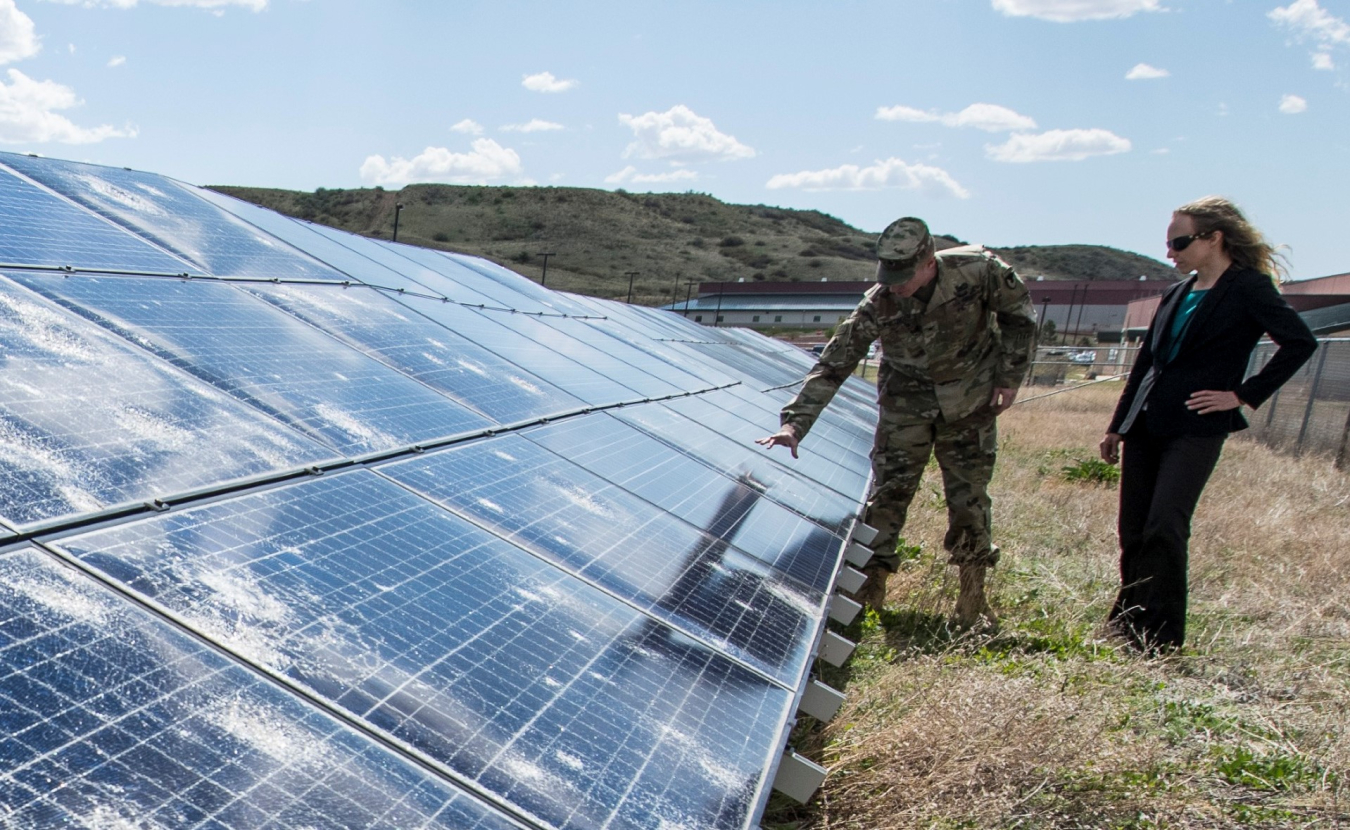Learn why Kate Anderson loves her job as a Senior Engineer at the National Renewable Energy Laboratory.
October 8, 2019
Kate Anderson is a Senior Engineer and Modeling and Analysis Group Manager at the National Renewable Energy Laboratory (NREL). Since joining NREL in 2008, Kate has supported partners in deploying clean energy through techno-economic modeling and analysis of energy efficiency, renewable energy, storage, and microgrid opportunities. Kate is the program lead for the development of NREL’s REopt model, used to evaluate cost-optimal selection and sizing of behind-the-meter energy assets for grid-connected and off-grid energy systems. She also leads NREL research to quantify and value energy resilience. Prior to joining NREL, Kate launched satellites as a captain in the Air Force. Kate has a B.S. in Aerospace Engineering from MIT, an M.S. in Renewable Energy Systems Technology from Loughborough University, and an MBA from the University of New Mexico.
What inspired you to work in STEM?
Growing up, I wanted to be an astronaut. I received a scholarship from the Air Force to study aerospace engineering at MIT, and, after graduating, I spent four years as an Air Force officer in New Mexico, launching satellites and conducting missile defense system tests. While there, I became interested in green building. New Mexico has a long history of green building, from adobe to strawbale to earthships. Earthships are passive solar houses made of recycled materials, designed to generate their own power, grow their own food, and collect their own water. This idea of self-sufficiency and minimizing impact on the earth resonated with me. It led me to a master’s program in renewable energy, and then to my job at NREL.
What excites you about your work at the Energy Department?
I think we’re addressing the most important issue facing our world today. What we do over the next 30 years may determine the future of the planet. It’s really exciting to be part of the transformation of our energy system. I love that I get to work with 2,000 of the smartest, most passionate people I know, all driven by the same mission to save the world.
How can our country engage more women, girls, and other underrepresented groups in STEM?
I think we need to start early, and make sure girls in elementary, middle, and high school know that STEM is a career field for women. Highlighting girls’ and womens’ achievements in math and science will help dispel stereotypes that men are better at science and exposing girls to successful female role models will help girls see that people like them can be successful in these fields too.
Do you have tips you'd recommend for someone looking to enter your field of work?
This is a really exciting time to be in the energy industry. We are facing the greatest challenge of our time, and we need all the smart, passionate people we can get to meet this challenge. Internships at the national labs are a great way to learn about all of the work going on and get your foot in the door. While many roles are in science and engineering, we need a wide range of expertise in areas including policy, finance, planning, behavioral economics, and communications to make this energy transition possible. I’d suggest reaching out to people working in areas you’re interested in to learn about what they do and what skills they find important in their work.
When you have free time, what are your hobbies?
I spend a lot of time hiking and rock climbing with my family and friends. We travel around the world to climb, but some of the most beautiful places I’ve been are right here at home. I’m also pursuing a Ph.D, so that takes up most of my free time!
Learn more about our programs & resources for women and girls in STEM at http://www.energy.gov/women

